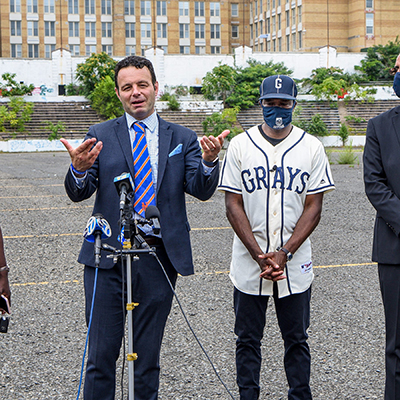Brian LoPintoSpecial to the USA TODAY Network
Major League Baseball recently announced that the Negro Leagues will be elevated to Major League status. While this elevation was long overdue, it certainly emphasizes the importance of the African American experience in baseball.
Major League Baseball stated: “With this action, MLB seeks to ensure that future generations will remember the approximately 3,400 players of the Negro Leagues during this time period as Major League-caliber ballplayers. Accordingly, the statistics and records of these players will become a part of Major League Baseball’s history.”
Late last year, Gov. Phil Murphy announced that the city of Paterson will be awarded additional tax credits for projects such as the rehabilitation of Hinchliffe Stadium.
The governor spoke glowingly about Hinchliffe Stadium. He stated that “this place matters,” and that Hinchliffe is a “cultural and social anchor” and a “nationally recognized symbol.” Murphy also said this about the venerable ballpark: “Hinchliffe is not just a ballfield — it is New Jersey’s Field of Dreams,” and that the stadium will have a “second act.”
What will Hinchliffe Stadium’s “second act” look like in the wake of Major League Baseball raising the bar in regard to the Negro Leagues?
Major League Baseball also stated: “With this action, MLB seeks to ensure that future generations will remember the approximately 3,400 players of the Negro Leagues during this time period (1920-1948) as Major League-caliber ballplayers.”
Since Hinchliffe Stadium is one of only two significant Negro Leagues stadiums in the United States, it is important to question what Paterson will do to ensure that future generations will remember the Negro Leagues’ contributions at Hinchliffe Stadium.
Hinchliffe Stadium is a tangible piece of African American history through the Negro Leagues. It is where the games actually took place. In order to properly respect this legacy, returning home plate to where these great men played is more than symbolic. It sends a message that Paterson prides itself as a Negro Leagues city.
Returning home plate to where Larry Doby and his fellow Hall of Famers once stood would be invaluable to a Paterson high school baseball player honing his skill at that exact historic location. It is the passing of a baton that can only be experienced first-hand.
Additionally, the proposed baseball configuration would not be conducive to high school competition. The Negro Leagues diamond is more appropriate for competitive use.
What has been lost in the Hinchliffe Stadium saga is why we are here in the first place. Simply put: It’s the African American history component. Without the Negro Leagues, Hinchliffe Stadium would not be a National Historic Landmark, and most likely, the tax credits for the stadium’s rehabilitation would not exist.
Brian LoPinto is president of Friends of Hinchliffe Stadium.
